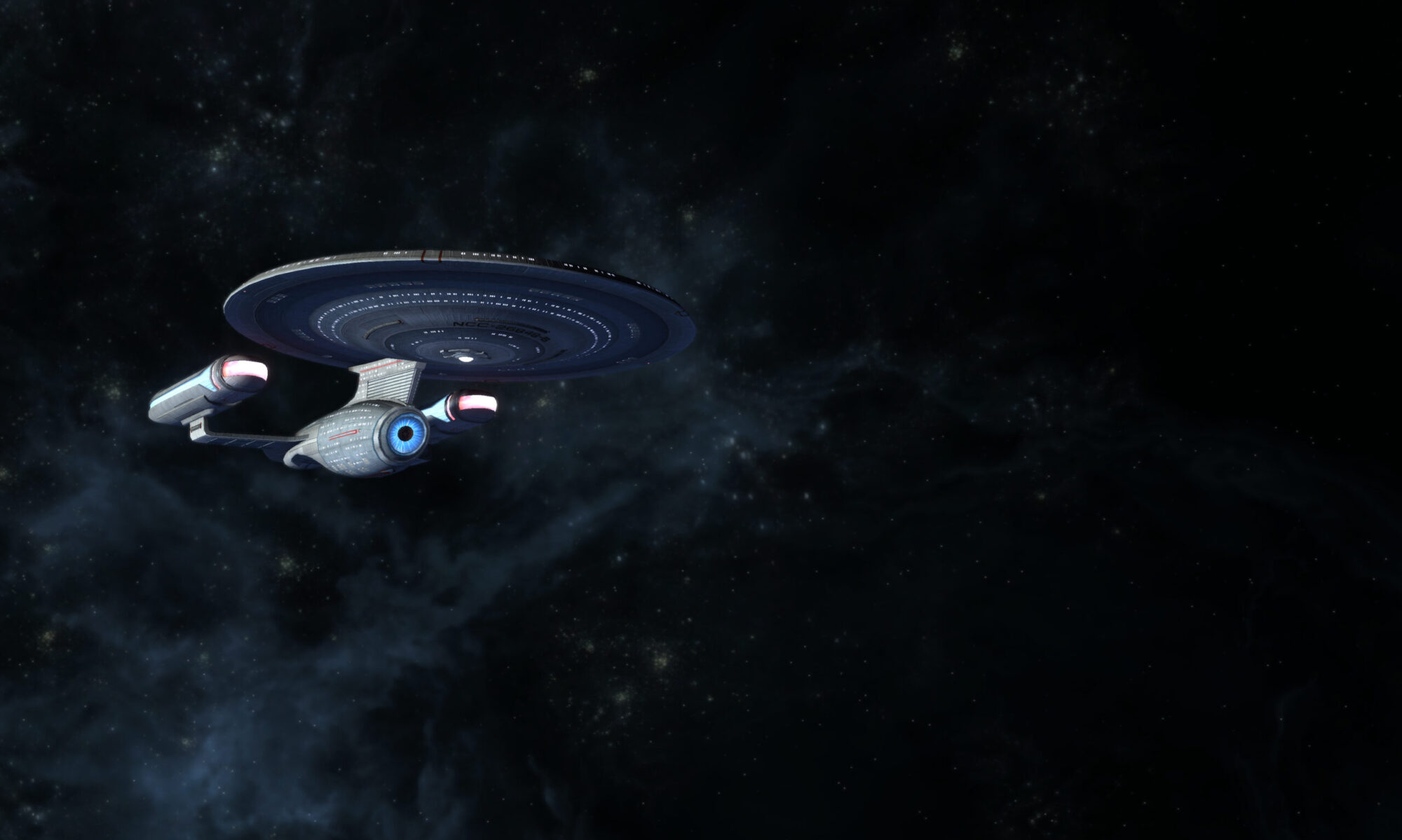Why Star Trek: Generations is a Good Film
[*****RED ALERT!*****SPOILERS BELOW!*****]

Generations is a flawed, but ultimately worthy entry in the franchise because it accomplishes something rare in franchise films: it effectively moves the characters forward. Picard has a satisfactory plot arc that adds depth to his character, Data takes a step that he needed to make for a long time, and Kirk is given a fitting farewell. And in true Trek fashion, the characters grapple with a metaphysical question: what does it mean to have a fulfilling life?
The core of the film deals with Kirk and Picard having to deal with the impact their legacies have had on them as men. This goes right to the core of the franchise. The first time we see a Starfleet Captain in The Cage, they have had to grapple with the responsibility of starship command, and how it leaves them lonely, isolated, and without family. Both Kirk and Picard have had to sacrifice leading a satisfying personal life to living for the greater good.
This comes into shocking relief in the Nexus. People tend to forget this about Kirk’s character, but the original concept of him was a man who said, “I’ve already got a female to worry about; her name’s the Enterprise.” His dalliances were ultimately tinged with tragedy, because they either ended in death (Edith Keeler, Miramanee), separation (Carol Marcus, Ruth), insanity (Lenore, Janice Lester), or were undertaken as a means to an end (Shana, Kelinda). Kirk’s greatest desire is to have lived a life for himself, one in which he was free to be involved with a person he loved.
Fans are upset by the manner of Kirk’s death, but ultimately it serves as a fitting conclusion to his character arc, both in the film and in the franchise at large. In his last moments, he makes a conscious choice. He knowingly puts himself at risk by leaping onto the platform. And as the catwalk is about to give way, he opts to help others—a man and a race he has never met—instead of saving himself. No one was ever going to get the better of Kirk in the end, nor was he going to go quietly in his sleep. He ultimately died to save others.
Kirks weighty decisions reflect the crisis that Picard had been grappling with, both in the series and in the film. Picard could have been an eminent archaeologist and didn’t. He could have had a family and didn’t. And now, the knowledge that he was now the last in his line was weighing heavily on him. From burying friends to ignoring his own passions, the burden of command was no less cumbersome. And it is telling that he had a nearly identical fantasy to Kirk’s while in the Nexus.
Soran functions as one of the better villains in the franchise, because he embodies the fears of both Captains. Instead of bettering himself and the Galaxy, he decided to devote his energy to achieve the ultimate act of selfishness. He waxes poetic about how our time is limited. But his choices stand in complete philosophical opposition to the lives of Kirk and Picard.
Data is confronted with this problem in another way. He finally gets what he has been yearning for, and it turns out to be less ideal than he had hoped. His journey has brought him to a place where grief, guilt and loss can affect him. It stands in marvelous contrast, because in attaining everything he wanted, he is forced to grapple with the things that Kirk, Picard and Soran find refuge from in the Nexus.
A frequently leveled criticism is that the audience never meets the inhabitants of the Veridian system. Could they have been introduced in way that wouldn’t detract from the intense emotional arcs of the characters? If it had been a planet we knew, it would have felt like emotional pandering. And no one wants to watch another movie where Earth is threatened, again.
The action set piece of the film, namely the destruction and crash of the Enterprise exceeds most of the Trek films. It is a sequence borne of incredible craftsmanship, and is one of the more intense and harrowing moments in the series.
While the film has many elements that work very well, it does not rank as one of the best films in the franchise.
Ultimately Generations shares many similarities with The Search for Spock. Both feature the destruction of the Enterprise and the emotional travails of her Captain. But the underlying issue is that many of the plot points don’t really cohere properly. There’s a weakness to the overall structure in both, where the events don’t seem to flow as they should. Sequences of spectacle, comic relief, and moments of intimate agony are thrown together in ways that, at times, diminish the impact of those constituent scenes.
Nevertheless, Generations is possessed of satisfying character development and entertaining spectacle. Along with Star Trek III: The Search for Spock (more on this later), it effectively disproves the simplistic “even good, odd bad” formula that has dominated Trek discourse for too long.
=/= LT Jesse MacKinnon
Chief Helmsman & Ship’s Historian
USS Loma Prieta


